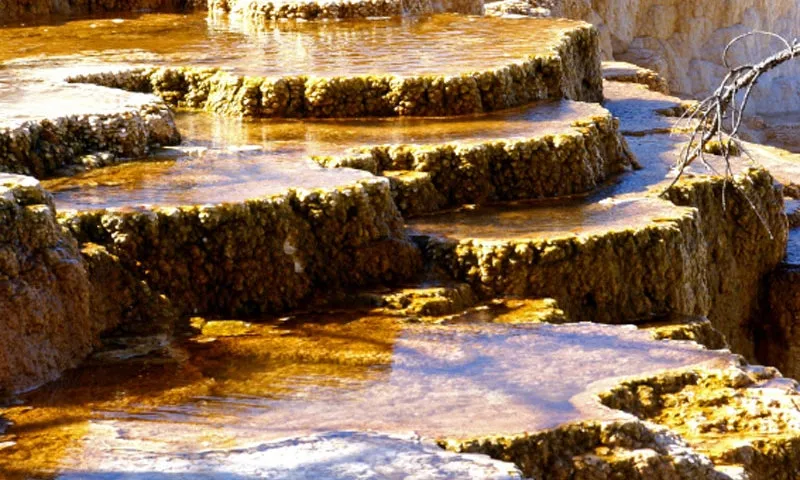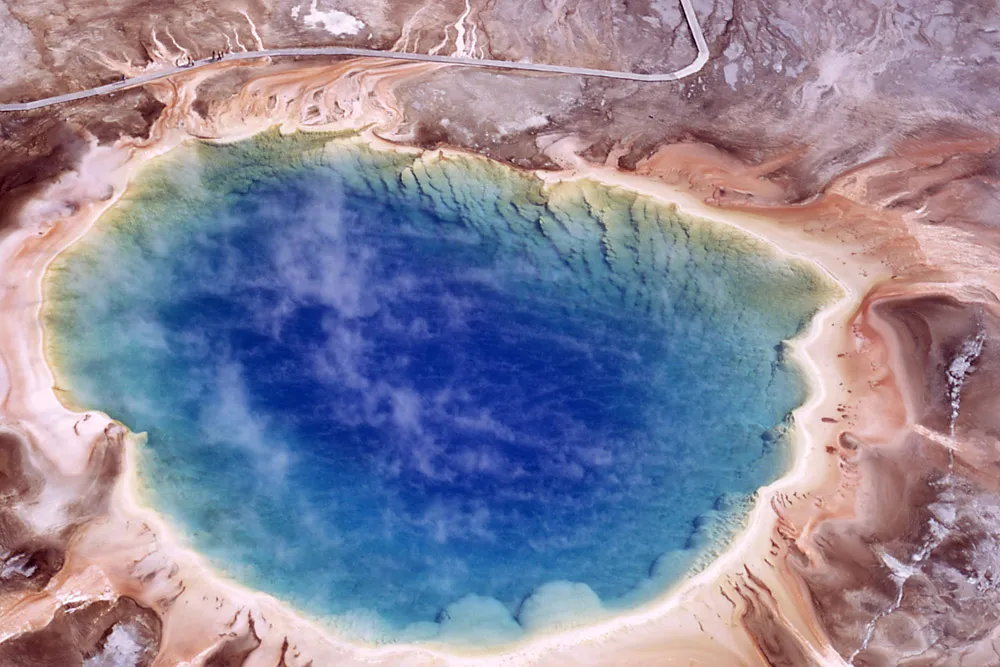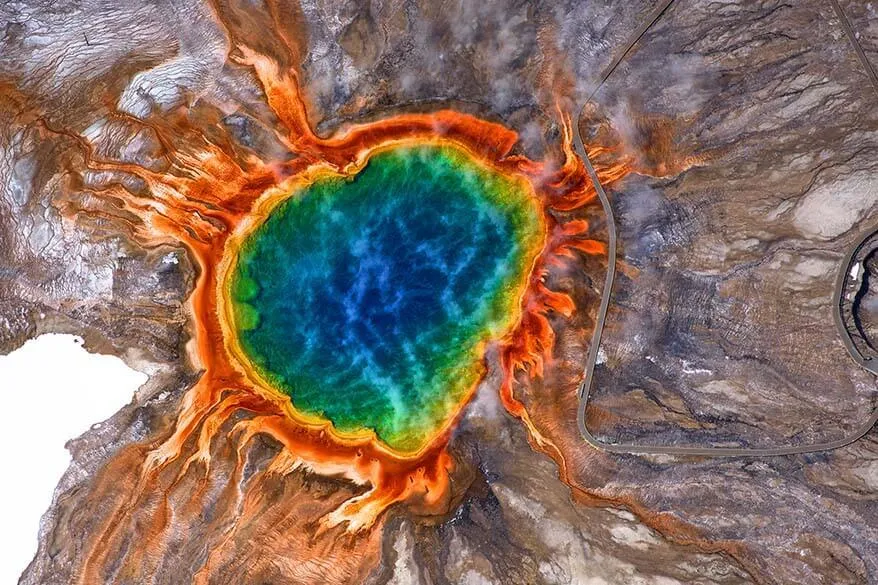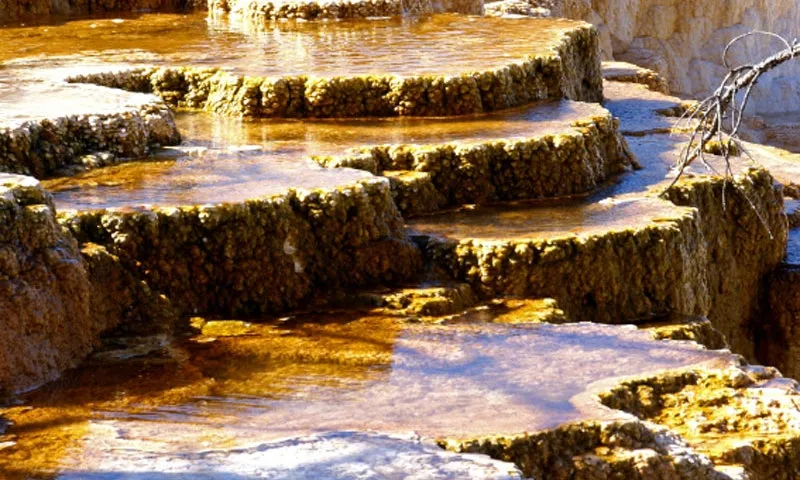
The Complete Guide to Yellowstone National Park Hot Springs: From Grand Prismatic to Hidden Gems
Having spent countless hours exploring the mesmerizing geothermal wonders of Yellowstone National Park hot springs, I'm excited to share my insider knowledge about these natural masterpieces. This comprehensive guide covers everything from the world-famous Grand Prismatic Spring to lesser-known thermal features, complete with safety tips, best viewing times, and personal experiences that will help you make the most of your visit to America's first national park.
Understanding Yellowstone's Hydrothermal System
During my first visit to Yellowstone National Park hot springs in 2018, I was absolutely mesmerized by the sheer diversity and beauty of these geothermal features. What I discovered through extensive research and multiple visits is that Yellowstone sits atop one of the world's largest active volcanic systems, which creates the perfect conditions for the planet's most spectacular collection of hot springs.
The park contains over 10,000 hydrothermal features, making it home to the world's largest concentration of geysers, hot springs, mudpots, and fumaroles. The process begins deep underground where magma from the Yellowstone hotspot heats groundwater to extreme temperatures. This superheated water then rises through underground plumbing systems, creating the diverse thermal features we see today.

What makes Yellowstone National Park hot springs truly unique is the incredible variety of colors and formations you'll encounter. The vibrant hues come from thermophilic bacteria and archaea – microscopic organisms that thrive in extreme heat. These heat-loving microbes create stunning rainbow patterns around the springs, with different species thriving at different temperatures, creating distinct color zones that shift from deep blues at the hottest centers to brilliant oranges and yellows at the cooler edges.
I've learned from park rangers that the hydrothermal activity in Yellowstone has been ongoing for thousands of years, constantly reshaping the landscape. The mineral content of each spring varies depending on the underground rock formations the water encounters, which explains why some springs form terraces while others create perfectly circular pools. Understanding this geological foundation helped me appreciate not just the beauty, but the incredible natural forces at work beneath our feet.
Types of Thermal Features in Yellowstone
- Hot Springs: The most common type, featuring open pools of heated water
- Geysers: Hot springs with constricted plumbing that causes periodic eruptions
- Mudpots: Acidic features with limited water supply, creating bubbling mud
- Fumaroles: Steam vents where water boils away before reaching the surface
Grand Prismatic Spring: The Crown Jewel
No discussion of Yellowstone National Park hot springs would be complete without dedicating substantial attention to the magnificent Grand Prismatic Spring. As the largest hot spring in the United States and the third-largest in the world, this natural wonder measures an astounding 370 feet in diameter and plunges to depths of over 160 feet. Standing before it for the first time, I was overwhelmed by its sheer scale and the intensity of its colors.

Located in the Midway Geyser Basin, Grand Prismatic Spring gets its name from its remarkable resemblance to the colors of a rainbow prism. The spring's center maintains a sterile deep blue color due to its extreme temperature of approximately 160°F (70°C), while the cooler edges support diverse communities of thermophilic bacteria that create the spectacular rainbow effect.
Best Viewing Strategy for Grand Prismatic
Through multiple visits, I've discovered that timing and positioning are crucial for experiencing Grand Prismatic Spring at its finest. The boardwalk provides an excellent ground-level view, but for the iconic aerial perspective, I highly recommend hiking the Fairy Falls Trail to the Grand Prismatic Overlook. This relatively easy 1.6-mile round trip hike offers breathtaking views, especially during late morning when the lighting is optimal.
The best time to visit is during cooler months when the steam doesn't obscure the colors as much. I've found early morning visits particularly rewarding, as the lower temperatures create dramatic steam effects while still allowing the brilliant colors to shine through. Park rangers told me that winter visits can offer the most vivid color contrasts, though accessibility may be limited.
Photography Tips for Grand Prismatic
- Visit during golden hour for the most dramatic lighting effects
- Use polarizing filters to reduce glare and enhance color saturation
- Consider drone photography (with proper permits) for aerial perspectives
- Bring extra batteries as cold weather drains them quickly
Mammoth Hot Springs: Nature's Limestone Masterpiece
Mammoth Hot Springs represents a completely different type of thermal feature within Yellowstone National Park hot springs system. Unlike the silica-based formations found elsewhere in the park, Mammoth is built from limestone, creating spectacular terraced formations that look like frozen waterfalls. During my visits here, I've been fascinated by how these terraces constantly change and evolve.

The formation process at Mammoth Hot Springs is truly remarkable. Underground water dissolves limestone as it rises to the surface, carrying high concentrations of calcium carbonate. When this mineral-rich water reaches the surface and loses carbon dioxide, it deposits calcium carbonate as travertine, building the characteristic stepped terraces over time. Park geologists have told me that these formations grow at a rate of about one inch per year.
Exploring the Upper and Lower Terraces
Mammoth Hot Springs is divided into Upper and Lower Terraces, each offering unique experiences. The Lower Terraces are easily accessible via boardwalks and feature some of the most active formations, including the famous Palette Spring. I always recommend starting here, as the boardwalk system provides excellent viewing angles and interpretive information.
The Upper Terraces require a bit more effort but reward visitors with expansive views and less crowded conditions. The drive up to the Upper Terraces offers several pullouts where you can stop and photograph the entire complex from above. One of my favorite spots is Canary Spring, where the bright yellow coloration creates a stunning contrast against the white travertine.
What makes Mammoth Hot Springs particularly interesting among Yellowstone National Park hot springs is its dynamic nature. Springs can become inactive overnight, while new ones can appear just as quickly. During one visit, a ranger pointed out areas that had been completely dry the previous season but were now flowing with hot water and rapidly building new terraces. This constant change means that every visit to Mammoth offers something new to discover.
Other Must-See Hot Springs in Yellowstone
While Grand Prismatic and Mammoth Hot Springs often steal the spotlight, Yellowstone National Park hot springs encompass dozens of other spectacular thermal features that deserve attention. Through my extensive explorations, I've discovered hidden gems and well-known favorites that showcase the incredible diversity of the park's geothermal system.
West Thumb Geyser Basin
West Thumb Geyser Basin offers a unique setting where hot springs meet Yellowstone Lake, creating an extraordinary juxtaposition of thermal features against the backdrop of the park's largest high-elevation lake. During my visits here, I've been amazed by springs like Fishing Cone, which sits partially submerged in the lake, and Black Pool, whose deep blue-black waters create an almost otherworldly appearance.

Norris Geyser Basin Hot Springs
Norris Geyser Basin contains some of the hottest springs in Yellowstone National Park hot springs system, with temperatures reaching over 200°F. The acidic nature of many features here creates unique mineral formations and vibrant colors. I've spent hours exploring both the Back Basin and Porcelain Basin, each offering distinct characteristics and stunning visual displays.
Upper Geyser Basin Springs
Beyond Old Faithful, the Upper Geyser Basin contains numerous exceptional hot springs. Morning Glory Pool, despite some thermal damage from visitor impact over the years, remains one of the most photographed springs in the park. Its deep blue center and colorful bacterial mats around the edges make it a perfect example of how temperature gradients create natural art.
Seasonal Considerations for Spring Viewing
Each season offers unique advantages for experiencing Yellowstone National Park hot springs:
- Summer: All areas accessible, but crowded conditions and steam can obscure views
- Fall: Fewer crowds, excellent visibility, beautiful contrast with autumn colors
- Winter: Dramatic steam effects, vivid colors, but limited accessibility
- Spring: Wildlife activity peaks, moderate crowds, variable weather conditions
Essential Safety Guidelines for Yellowstone Hot Springs
Safety around Yellowstone National Park hot springs cannot be overemphasized. During my years of visiting these thermal features, I've witnessed too many close calls and have learned firsthand from park rangers about the serious dangers these beautiful features pose. The water in many springs reaches temperatures well above the boiling point, and the surrounding ground can be thin and unstable.
⚠️ CRITICAL SAFETY RULES ⚠️
- NEVER swim, soak, or wade in any thermal features
- ALWAYS stay on designated boardwalks and trails
- NEVER touch thermal features or runoff water
- Keep children and pets close and supervised at all times
- Do not throw objects into hot springs
The National Park Service reports that more than 20 people have died from burns after entering or falling into Yellowstone National Park hot springs. These tragedies are completely preventable by following safety guidelines. The water temperatures in these springs can exceed 200°F, which can cause third-degree burns in seconds. Additionally, many springs are highly acidic, adding chemical burns to the thermal danger.
During my visits, I've noticed that the most dangerous situations often arise from people trying to get the perfect photograph or selfie. I always maintain a safe distance and use zoom lenses when photographing thermal features. Park rangers have shared with me that many accidents occur when visitors step off boardwalks onto what appears to be solid ground but is actually thin thermal crust that can break through.
Wildlife Safety Around Hot Springs
Animals also use thermal areas, particularly during winter months when the warm ground provides relief from harsh conditions. I've encountered elk, bison, and even bears near Yellowstone National Park hot springs. Always maintain the required 25-yard distance from most wildlife and 100 yards from bears and wolves. Never approach animals that are near thermal features, as they may have limited escape routes and feel cornered.
The combination of thermal dangers and wildlife encounters requires heightened awareness. I always carry bear spray when hiking to more remote hot springs and make noise to avoid surprising animals. Park regulations require visitors to stay at least 25 yards away from most wildlife, but I recommend even greater distances around thermal areas where animals may be more unpredictable.
Conclusion
Exploring Yellowstone National Park hot springs has been one of the most rewarding experiences of my life, offering countless opportunities to witness the raw power and beauty of our planet's geothermal forces. From the world-renowned Grand Prismatic Spring with its rainbow colors to the elegant limestone terraces of Mammoth Hot Springs, each thermal feature tells a unique story of geological processes that have been shaping this landscape for thousands of years.
Through my extensive visits and research, I've learned that successful exploration of these natural wonders requires careful planning, respect for safety guidelines, and an appreciation for the delicate balance that maintains these ecosystems. The thermophilic organisms that create the stunning colors in Yellowstone National Park hot springs are extremely sensitive to environmental changes, making it crucial that we protect these features for future generations.
Whether you're planning your first visit or returning to discover new aspects of these incredible thermal features, remember that each season offers unique viewing opportunities and experiences. The key to maximizing your visit lies in understanding the geological processes, respecting safety protocols, and taking time to truly appreciate the natural artistry displayed in every pool, terrace, and steam vent.
I encourage every visitor to Yellowstone National Park hot springs to approach these features with both wonder and respect. They represent not just beautiful natural attractions, but living laboratories where we can observe and learn about the dynamic forces that continue to shape our world. The memories and photographs you'll take home will serve as lasting reminders of one of nature's most extraordinary displays.
Start Planning Your Yellowstone Hot Springs Adventure
Ready to experience the wonder of Yellowstone National Park hot springs for yourself? Use these resources to plan your perfect visit:
